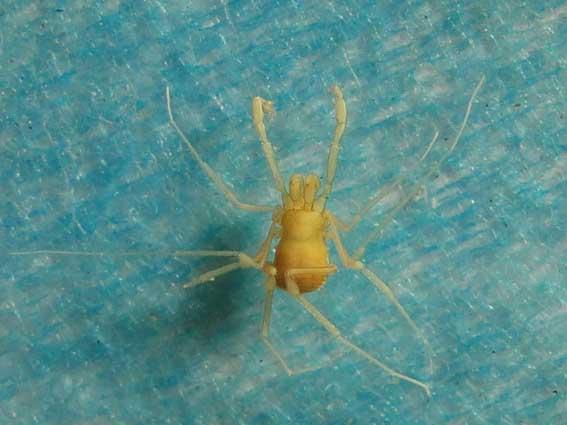Aylin Alegre Barroso
Other projects
23 Jul 2009
Research and Environmental Education for Caves’ Conservation of the Protected Area Majayara
4 Apr 2013
Reaching the Ecological Sustainability Within the Protected Area Yara-Majayara, Baracoa, Cuba
The primary goal of the proposed project is the conservation of fauna associated with karst landscapes in the protected area Yara-Majayara Natural Monument. The inventories of troglobitic as well as the epigean invertebrates have the objective to ratify or to determinate the troglobitic condition and the conservation status of these invertebrates, which are considering a fragile cave dweller fauna that deserves particular attention, besides these studies will permit to complete the knowledge about the invertebrate fauna of the protected area. Another aim is to continue working with local communities so as to mitigate conservation problems already detected inside and outside of caves. We will strengthen environmental education initiatives already underway and will undertake new actions in collaboration with local farmers. This new project include enhancing captive breeding of jutías and experimenting with earthworm compost/fertilizer as an alternative to the harvest of bat guano.

About 70 % of Cuba surface area is constituted by karst, which has given place to a great quantity of caves with the most diverse fauna in the West Indian islands. However Cuban cave fauna has received scarce efforts for its study and conservation. The protected area Yara-Majayara possesses a karstic landscape as fewest in Cuba. Three levels of marine terraces, covering a surface area of 17, 8 km², constitute the habitat for numerously Cuban endemic species, but is also the place for the establishment of several people communities and important archaeological sites. Consequently, this is a scenario where the speleofauna is interacting with human communities, a growing tourism and a prominent attention to native sites.
The Second RSG project consists in a reinforcement of the previous project and expects to continue increasing the cave and karst associated fauna knowledge to improve the management plan of the protected area. The principal focus is on the caves themselves and the three elements that contribute to their ecosystem dynamics: bats, whose guano is clearly the critical source of energy and nutrients for many caves; troglobitic invertebrates which have an elevate risk of extinction, otherwise feed on guano and on each other; and epigean invertebrates found both outside caves and inside them, resulting a significant source of energy too. Nevertheless the project also includes enhancing conservation of four at-risk endemic species that often or always utilize caves or karst (the jutía conga, a large rodent and the Cuban iguana both hunted species, plus the Cuban boa, killed out of ignorance and fear and the national snail Polymita picta, affected by the burn of vegetation, a local practice to facilitate the cultivation of the lands).
Particular efforts will be also directed to the mitigation of the extraction of bat guano, one of the conservation problem previously detected. The work will involve the same communities of the previous project and some other that also belong to the protected area, on the other hand we will study three new caves, in addition to the four preceding investigated, achieving a major reach in the entire protected area.